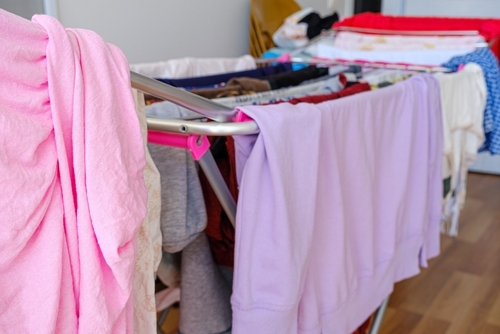Throughout winter, many of us will be relying on tumble dryers for drying clothes indoors. From school uniforms to towels and bedding, having a tumble dryer in the colder months is beginning to feel like more of a necessity than a luxury — but has it come at a bad time?
The energy crisis is presenting households with rising bills so you might think the added cost of running a dryer is one that should be cut back. But with the right tumble dryer tips, and insight into the best way to dry clothes indoors, you can save a little on your energy bills and hopefully avoid needing tumble dryer repairs.
Tips for drying clothes indoors in winter
These tips will help you keep the costs of running a dryer down, without losing any of the benefits that come with using it.
1. Make sure tumble dryer loads are balanced
Add too much and clothing becomes easily tangled, taking multiple cycles to dry a single load. Put in too little and you’ll end up having to do more than one load to dry your laundry, wasting money and energy.
Dryers work by circulating heat so there needs to be enough space for hot air to move around inside the drum.
Check your dryer’s manual, then apply a little trial and error as every machine is slightly different. A good rule of thumb is to keep your tumble dryer no more than two-thirds full. Overfilling the dryer puts it through unnecessary strain, making it more likely to need a repair.
2. Clear the lint out of your tumble dryer
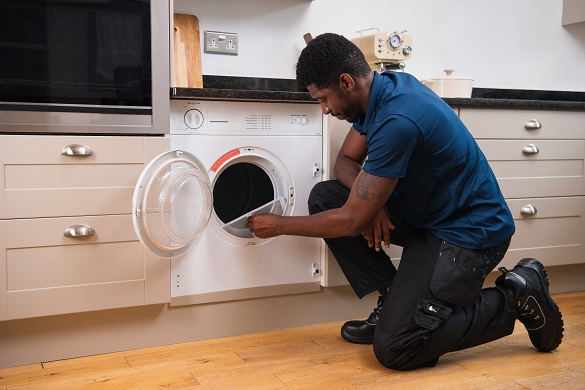
When you dry clothes in a tumble dryer, the shedding fibres cause a build-up of lint in your appliance.
Take time to clean the lint screen after every load. It may seem tedious, but it can make a real difference to your dryer’s efficiency. The time it takes to clean the lint filter is minimal compared to the time it takes to run an extra cycle when your clothes come out damp.
On a safety note, when the lint screen isn’t cleaned, hot air can’t flow out of your tumble dryer correctly and can cause the dryer to operate at an unsafe temperature. Given that lint material is very fine and dry, it can quickly ignite.
The lint screen is normally found in the door of your tumble dryer and can be cleaned by simply rolling the lint off with your fingers.
3. Don’t keep your tumble dryer in a cold room
In the UK, the garage is used for more than just keeping your car in at night. A lot of people keep their tumble dryer there simply because they don’t have enough room in the house (and they don’t need to listen to it).
However, tumble dryers don’t work as effectively in cold rooms, or in small spaces with poor air circulation — the conditions you generally find in a garage in winter. By keeping your dryer in a well-insulated room, as opposed to a cold garage, less energy is needed to warm up the air that circulates inside the dryer, saving you a little on your energy bills.
4. Separate longer-to-dry items in the tumble dryer
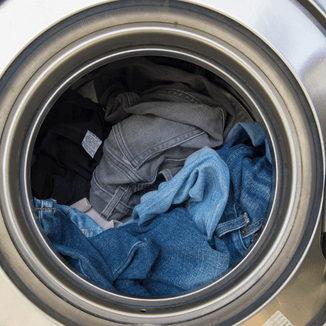
When it comes to loading your tumble dryer, you might want to consider sorting the similar weighted heavier items (or the items that take longer to dry), from the similar weighted lighter items (the ones that dry quicker). A pair of jeans, for instance, is going to take longer to dry than a cotton t-shirt.
If you wash all sorts of clothes, bedding, and towels together, then load them into the tumble dryer afterwards, you may find that after a cycle that’s dried some of the load — other items are still damp.
Leaving them to dry afterwards then risks them smelling damp — and before you know it, they’re back in the washing machine and you’re needlessly wasting more energy and money drying them once more.
5. Do all your laundry on the same day
If you really want to get yourself organised, plan to do your different loads of laundry on the same day. Not only will this help you to dry loads of similar fabrics at the same time, but your second or third load can take advantage of the residual heat that’s already built up in the dryer.
If you have a time-of-use tariff, your energy will be cheaper during off-peak hours when there is less demand. This depends on your supplier, but according to Money Supermarket they are usually between 10pm and 8am. Just make sure you follow fire safety guidance and never put a load in before you head to bed for the night.
Then you can tick the washing and drying all off in one day. The ironing on the other hand…
6. Add a dry towel to your load
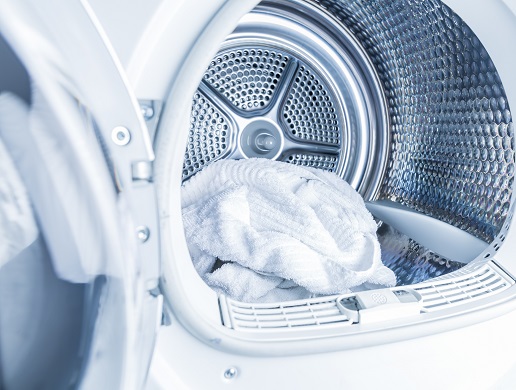
When you're in a hurry, it can be frustrating waiting for the tumble dryer to finish.
To save on time, try throwing a dry, thick bath towel in with the garments you need to dry quickly. The towel will absorb some of the moisture, making your items dry faster.
Remember to take the towel out after around five minutes if you’re drying just a few items, or after 15 minutes for a full load. Let the towel air dry while your clothes finish off in the dryer.
Besides saving time, this also saves both energy and money. It’s a quick, easy win.
7. Dry clothes on a heated airer in a well-ventilated room
Clothes need air and ventilation to dry, so hanging your clothes neatly and spread out on your heated airer will reduce the drying time.
Wet clothes can increase the damp in your property. By increasing the moisture levels in your home you’ll be adding to the chance of damp, creating the perfect environment for black mould.
Opening a window in the room where you’re drying your clothes is the easiest thing you can do to let out the extra moisture. The natural ventilation from the fresh air will do its job.
You can also consider buying a dehumidifier to draw the water droplets from the air or install extractor fans.
Our blog is loaded with more related articles

Tumble dryer tips
Cost of running a tumble dryer
In the rainy UK, we can’t hang laundry outside for much of the year. So perhaps you’re looking at tumble dryers and...
Read more
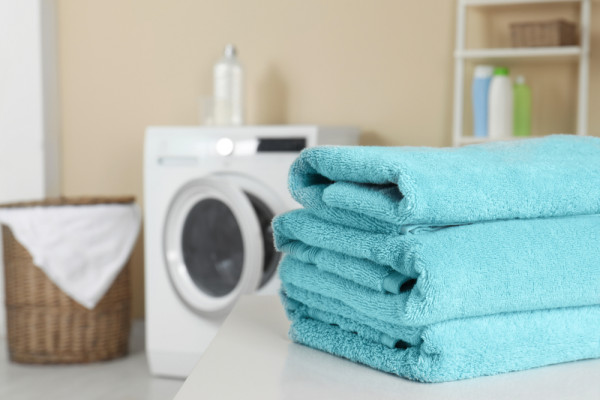
Tumble dryer tips
Tumble dryer buying guide: what to look for in a new dryer
Looking for a new tumble dryer but feeling overwhelmed by the options? Our buying guide covers everything from capacity to ener...
Read more

Tumble dryer tips
3 ways to fix your tumble dryer
There are number of issues you might have with your tumble dryer, we have picked out the top 3 common faults and how to fix the...
Read more
